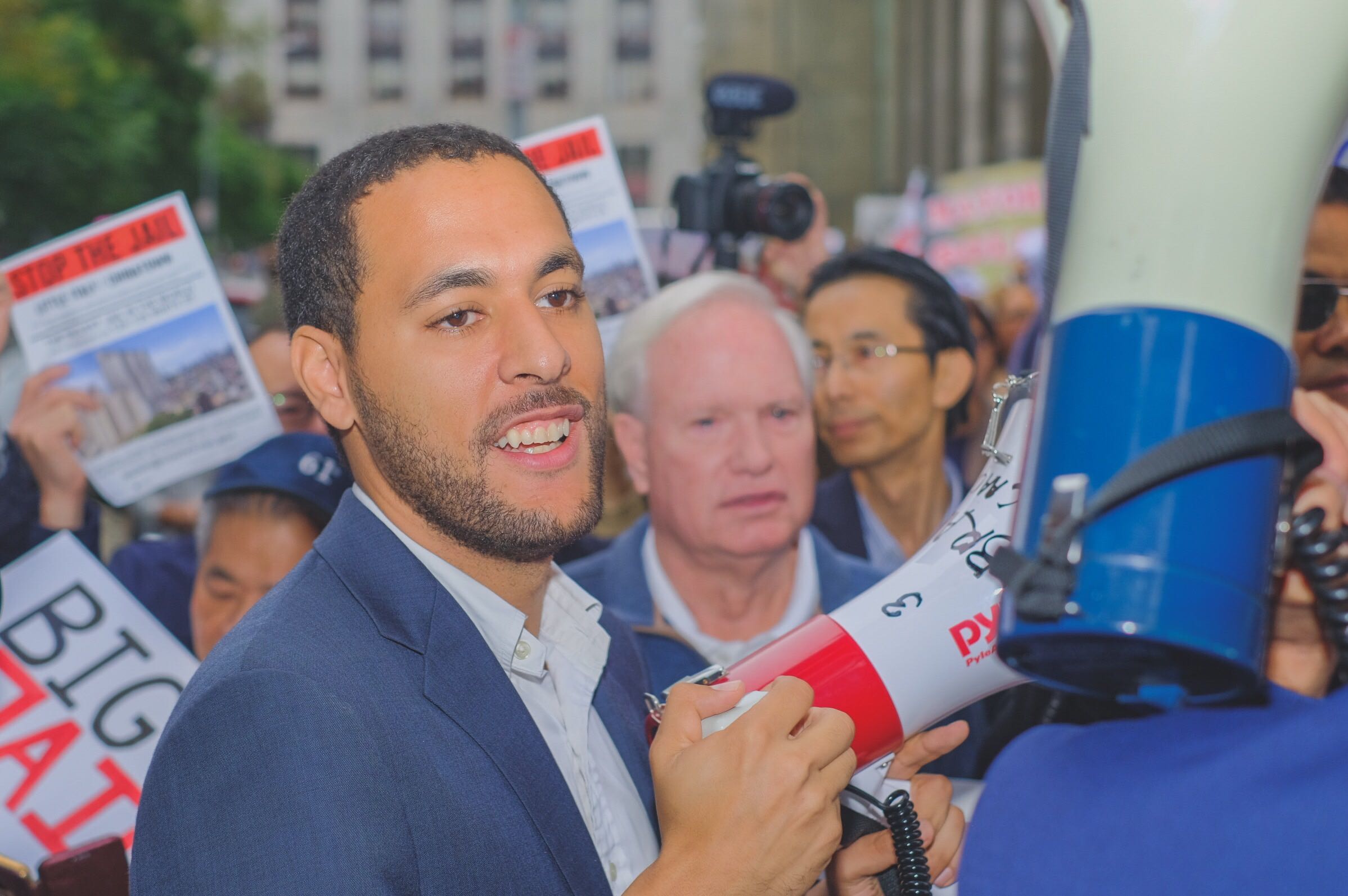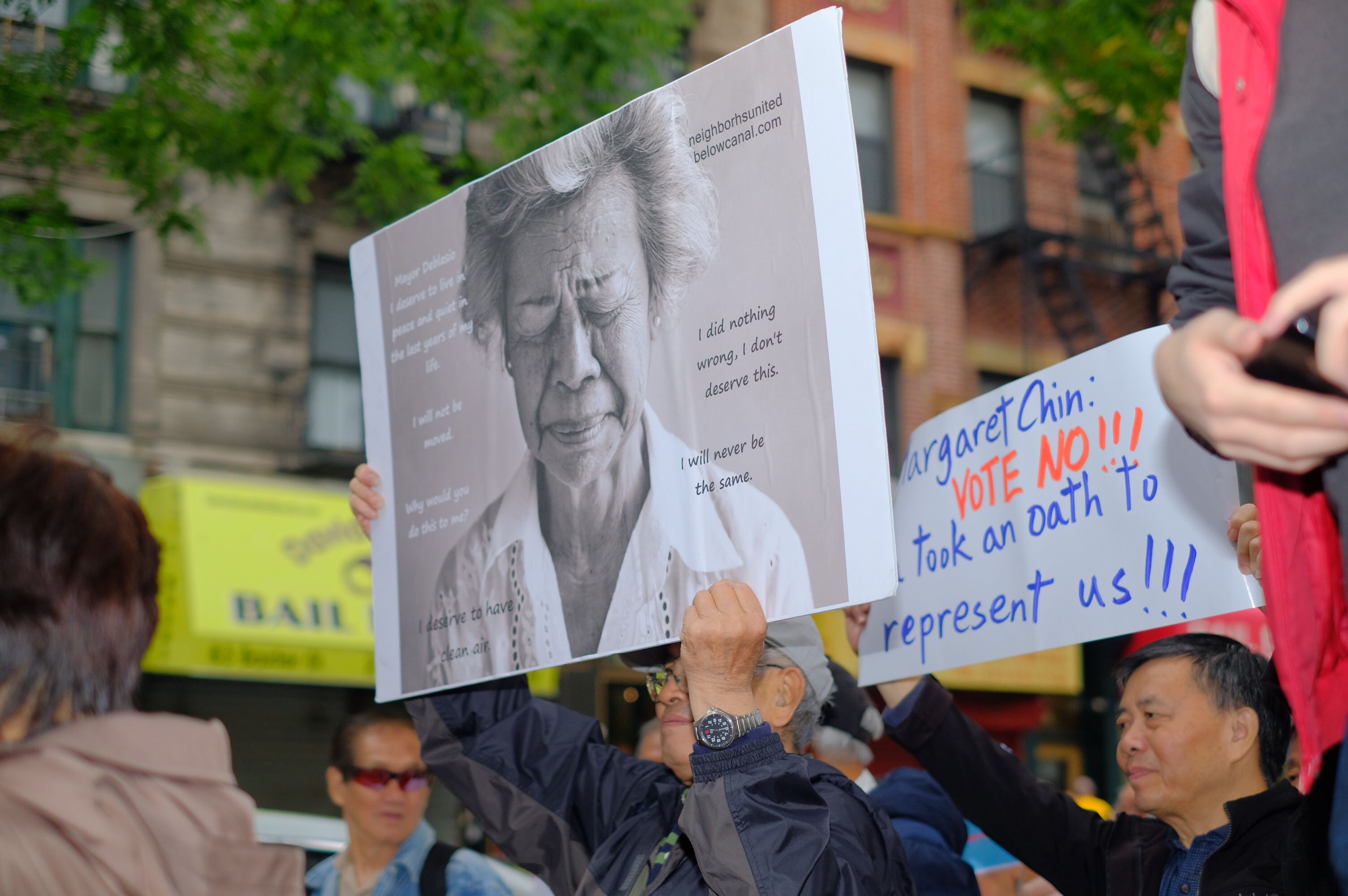
BY MARK HALLUM | A rally through the streets of Chinatown on Sunday brought out opponents of the mayor’s borough-based jail plan from four of the city’s five boroughs. Residents of Chinatown called on Councilwoman Margaret Chin to vote against the borough-based jail plan as a ULURP application including all four locations goes to a City Council vote on Oct. 17. The proposal is part of the city’s long-term effort to shutter Rikers Island. “What we wanted to show today is that all four boroughs could come together and actually lead a protest against City Council voting [in favor of the borough-based jail proposal],” said activist Christopher Marte. “We organized this rally to show them that we’re watching, if they vote yes, we will vote no for them in the future.” Although Margaret Chin is term limited in 2021, as is Queens Councilwoman Karen Koslowitz who represents Kew Gardens where another facility is slated, the two elected officials have said they would remain in communications with the de Blasio administration to see that community concerns are addressed. A representative for Chin told The Villager that the councilwoman was doing her part to represent the community to see that modifications to the plan are made in the interest of Chinatown’s residents who have been vocal of their opposition. With chants such as “Save our seniors!” Arlene Parks from the Bronx said in the middle of Chatham Square with representatives from other boroughs. “When you have an undemocratic process where the voices of the people are not heard, you have no democracy,” Parks said.

Many speakers at the protest called for the city government to invest the $8.7 billion projected to be invested in the new jails to education and communities most effected by the justice system. Just as many voices expressed distrust that the next mayoral administration would follow through with de Blasio’s promise to close Rikers once the jails are built. The four proposed facilities are based off of an outline pieced together by the Lippman Commission which called for smaller capacity jails situated near courthouses to not only better facilitate visitations and transport to court appearances, but to instill a cultural change in city corrections system. Many blame the abuses experienced by detainees in Rikers to the isolation of the island. The facilities would house about 1,100 detainees, a number that has been reduced from 1,500 by the Mayor’s Office of Criminal Justice.

Hundreds joined the march on the southern end of Columbus Square, which went north past the Manhattan House of Detention before turning east, then south at Mott Street and ending at Chatham Square. Three perspectives have persisted in the fight against the borough-based jails. While neighborhood groups oppose the jails for the factor they could play on property values and crime in their communities, others, such as #NoNewJails, believe Rikers should be closed with no replacement. The view favors diversion programs which offers services to individuals in the justice system and prevent recidivism. Correction: an earlier version of this story put the cost of closing Rikers at $11 billion which was based on earlier figures. The current preliminary estimate is $8.7 billion, according to the Mayor’s Office of Criminal Justice.




































